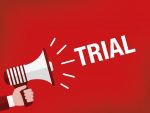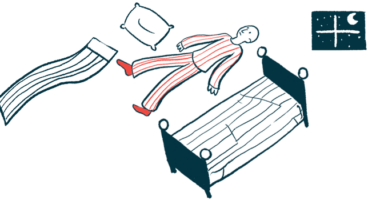Trial: Gene Therapy GTX-102 Shows Promise in Angelman Children

The investigational gene therapy GTX-102 shows potential to lessen disease severity and improve function in children and adolescents with Angelman syndrome, according to interim data from a Phase 1/2 clinical trial.
Six-month follow-up data for 11 patients showed that treatment with GTX-102 resulted in improvements across exploratory efficacy measures in six domains, or areas — behavior, gross and fine motor function, expressive and receptive communication, and sleep. The effects were measured with the Clinical Global Impression of Change (CGI-C-AS) and Clinical Global Impression of Severity (CGI-S-AS) scales.
The gene therapy, given in doses of up to 10 milligram (mg), has been well-tolerated, and no treatment-related serious adverse events have been reported.
“I am convinced we are seeing evidence of a therapeutic effect with GTX-102 though it’s still early in the study,” Erick Sell, MD, director of the Angelman clinic at the Children’s Hospital of Eastern Ontario and the study’s lead researcher of the trial’s arm in Canada, said in a press release.
“I am also encouraged by the improvements in quality of life that most of the families at my center are consistently reporting and believe that this could be a promising treatment for patients with Angelman syndrome,” Sell added.
The open-label KIK-AS trial (NCT04259281), which began dosing in November 2021, so far has enrolled 14 pediatric patients. Each of the children and adolescents, who range in age from 4 to 17, were diagnosed with Angelman caused by a complete deletion of the maternal UBE3A gene. Four patients have been treated at the U.S. study site, and 10 at centers in the U.K. and Canada.
The study’s primary goal is to assess the safety and tolerability of multiple doses of GTX-102. Secondary goals, besides the exploratory efficacy measures, include the therapy’s pharmacokinetics —how a medicine moves through the body — and its concentrations in blood and cerebrospinal fluid, which is the liquid that surrounds the brain and spinal cord.
Early results of the KIK-AS trial
Of the 14 patients treated so far, seven have received cumulative doses over 20 mg, and 13 have been followed for more than 147 days (about five months) since the treatment.
Seven of nine patients in the U.K and Canadian arms, with data until day 128 (around four months) after treatment, demonstrated improvements in at least three of five domains of CGI-C-AS when compared with the trial’s start. These patients also showed overall improvements relative to the start of the therapy.
Similar results were seen in the two U.S. patients with data up to day 128.
The single patient with data up to 170 days (5.5 months) showed a lessening in severity — by 2–3 points — across all five domains of the CGI-S-AS.
“We are treating severely developmentally impaired individuals who are non-verbal and normally have a very slow rate of learning, making only minimal progress over years based on clinical observations and natural history studies,” said Elizabeth Berry-Kravis, MD, PhD, a professor of pediatrics at Rush University Medical Center, in Chicago, and a lead researcher in the study.
“The changes that we have seen clinically in less than a year in both the original five patients and the current patients, which are also captured by the AS Change and Severity Scales, may seem small but are truly important improvements, given the rate of developmental progress in Angelman syndrome,” she added.
This lessening of disease severity, and improvements across different domains, also were supported by other clinical parameters. These include assessments by psychologists using the Bayley Scales of Infant and Toddler Development, and evaluations by clinicians based on the Vineland-3 adaptive behavior scale. Improvements also were cited by caregivers through the Observed Reported Communication Ability assessment.
Analysis of the cerebrospinal fluid, known as CSF, was consistent with no signs of inflammation. A case of asymptomatic reactivation of varicella-zoster virus — the cause of chicken pox — was the single case in which increased protein levels in the CSF were detected. These eventually normalized and the patient resumed dosing without issues.
One patient in the U.S. also showed a modest increase in protein levels in the CSF but it resolved.
The most common adverse events reported to date include vomiting, COVID-19, upper respiratory infection, transient back pain, and transient difficulty in sleeping.
New trial protocols
These interim data support a protocol amendment that allows researchers to start dosing patients at higher monthly doses. The first patient has been dosed under the new protocol, which was approved in the U.K. and Canada in May. The new amended protocol is yet to be included in the U.S. arm of the trial, pending discussions with the U.S. Food and Drug Administration (FDA).
Patients in the higher dose groups will receive doses ranging from 7.5 to 14 mg, according to their age. Once enough data on efficacy has been gathered, the trial will enroll 20 younger and older patients for long-term follow-up. These patients will provide data on the longer-term efficacy and safety of GTX-102.
“We are seeing encouraging early clinical activity across multiple domains and multiple measurements without any evidence of drug-related safety issues,” said Emil D. Kakkis, MD, PhD, CEO and president of Ultragenyx, which is co-developing GTX-102 along with GeneTx Biotherapeutics.
“The therapeutic effect should be further enhanced by starting at higher monthly loading doses that have already been shown to be tolerated,” Kakkis said.
Ultragenyx also announced that it has begun the steps to acquire GeneTx. According to the press release, the company has released an upfront payment of $75.0 million plus future milestone and royalty payments.
GTX-102 is an antisense oligonucleotide that targets UBE3A-AS, the molecule underlying Angelman syndrome, preventing it from working.
By inactivating UBE3A-AS, GTX-102 is believed to induce the reactivation of the paternal copy of UBE3A in the brain as a way to compensate for the lack of a working maternal copy of the gene.
The gene therapy has been granted orphan drug and rare pediatric disease status by the FDA for Angelman syndrome. It also was granted the agency’s fast track designation. All are designed to speed the therapy’s development and review.








